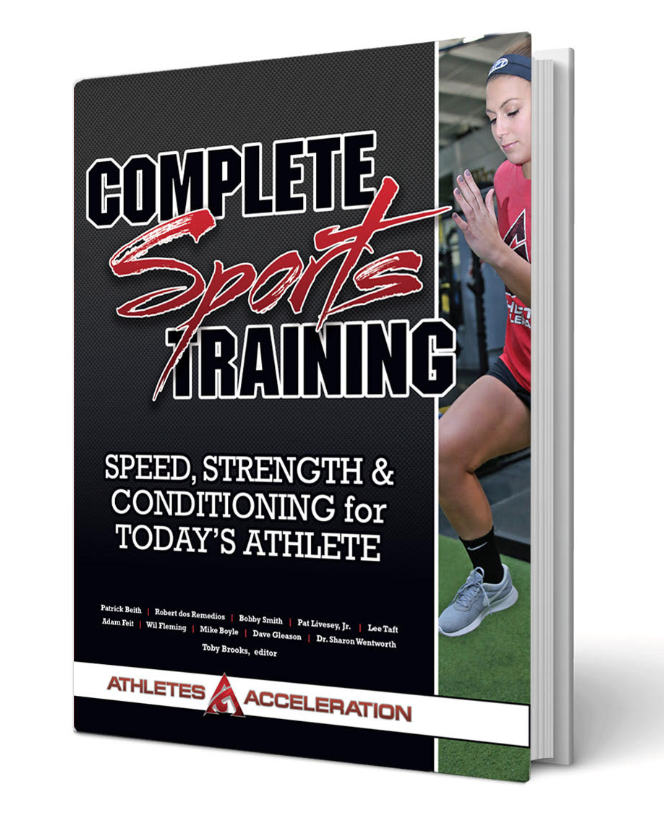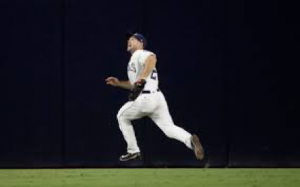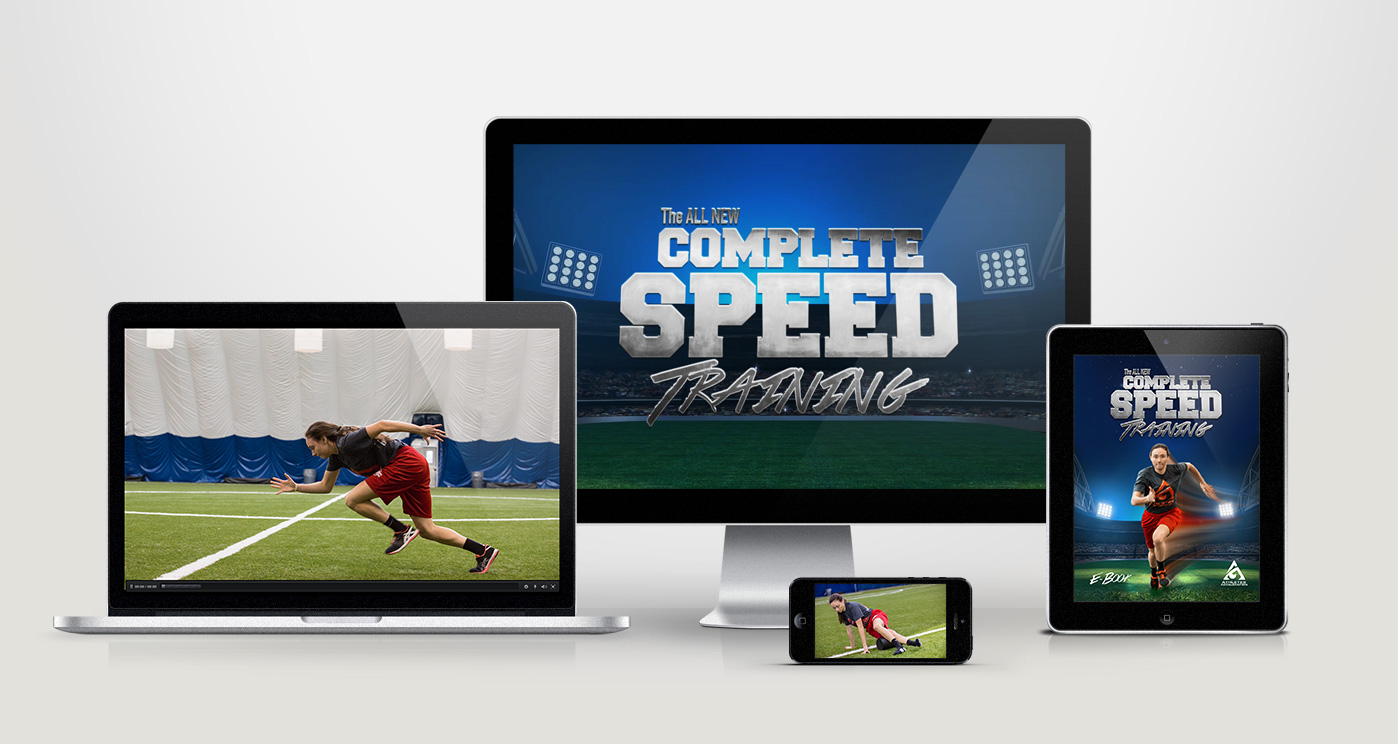Essential Movement Skills for Baseball Athletes
By: Phil Loomis
As a kid I was always fascinated with two things: running fast and baseball. My first vivid memory of the powerful impact that running speed can have on a baseball game came during the 1995 World Series when the Atlanta Braves played the Cleveland Indians.
I was pulling for the Braves and whenever the Indians’ Kenny Lofton came to the plate I would get very nervous… And if he made it on base with no one on in front of him I’d break into a sweat! The reason? Lofton’s speed and the presence of it was extremely disruptive to the Braves pitching staff and their defense.
Speed truly changes the game! It forces pitchers and catchers to divert their attention from executing pitches. It forces infielders to move in or shift out of position to cover on a potential steal. Fast base-runners literally speed the game up and force the defense to rush.
That said there are far more uses for speed and agility in baseball other than base-running. During the “Steroid/Money Ball” era of the late 90’s and first decade of the 2000’s, it seemed like running speed was often marginalized in favor of muscle bound sluggers and advanced metrics that seemed to favor station-to-station baseball.
Now with the help of advanced technology like Major League Baseball’s Statcast, running fast is a tool that needs to be recognized once again. With Statcast they are measuring very relevant data and creating new categories for scouts to utilize when evaluating talent. One of the more exciting advanced metrics is sprint speed.
In baseball acceleration is vital! Top end speed rarely comes into play. However, the ability to cover as much ground in an extremely abbreviated time frame “makes” or “breaks” your ability to make baseball plays.
Here are 4 techniques/ movement skills for baseball (along with a drill that allows athletes to explore and feel the movement) that practically apply the kind of speed required on the baseball field.
Technique 1- Lateral Plyo-Step
Situation (Ignition skill that “triggers” the subsequent techniques/drills)
The lateral plyo-step initiates or links virtually all related movement skills for baseball. You can see this well in the photos below with Byron Buxton of the Twins and the infielder ranging back on a fly ball. They are driving off the left leg to initiate the kinetic chain and direct their body toward the path of 2nd base or the ball. This naturally happens, it’s another display of our bodies innate ability to seek efficiency.
Band resisted lateral drives
Technique 2- Base Stealing Start
Situation (base stealing/particularly second base)
From a base stealing athletic stance, the movement is initiated by driving away from 1st base with the left foot (lateral plyo-step). The right leg/hip will open toward second base with the right shin angled back toward 1st base. The right leg will take on the weight of the body and drive down and back. Then the left leg will punch across/through toward 2nd base.
While each of these movements are distinct, particularly when describing them in a written format, it’s important to understand they happen in rapid succession. It’s useful to break them down so as a coach you know what to look for. More than likely, however, your athletes will instinctively perform these actions. If so, let them alone. Their system has downloaded and saved it to their athletic portfolio. If it’s not happening that’s when you can intervene with specific drills to help your athlete feel a more optimal movement strategy.
Related: Drive and Drop Start Technique
½ Kneeling Get Out to Sprint
Technique 3- Base rotation to retreat
Situation (INF and OF getting back on fly balls)
Starting from an athletic stance, your “base”- the hips down through the feet- repositions. This is quickly followed by a powerful lateral plyo-step that allows the athlete to retreat/get back on a fly ball.
The initial base rotation movement is anywhere from a 5 to 90-degree rotation from the hips and the legs/feet come along for the ride. The entire lower half is connected. This allows your torso/head to keep the play in front of you to optimize your ability to track the ball without losing sight of it. If you turn your head and trunk and lose sight of the ball you will inevitably slow down when you try to pick the path of the ball back up again.
If it’s a shot and the athlete feels their best opportunity to make the play is to turn and run to a spot, then you must trust their athletic instincts. The ability to explode out of a base rotation is often where the play is made. You can increase their opportunities even more by getting athletes comfortable with the lateral run which we’ll cover next.
Reactionary base rotation to chase
Key concept with the base rotation to retreat:
Overthrow them! You don’t run your fastest on the plays you make, rather those that are just outside of your current ability. For a great analysis of this read about Lorenzo Cain. Deliberately overthrow your athletes to challenge their speed capacity but keep it just outside of their current range. If you throw it too far outside of their range they will give up on the play!
Technique- Lateral run
Situation (INF that needs to cover ground in a split second/OF tracking ball in gap or toward foul line)
Starting from an athletic position and assuming the athlete is about to move to their right, they will drive the ground away with their left foot and their right leg/hip will open in the intended direction of travel (in this case to their right), the left knee leg will punch across to the right and their torso/eyes will remain oriented to the play/ball. Essentially the lower half is sprinting to the right while the torso is in a lateral shuffle position. There will be some torso rotation to the right (highly dependent on the angle the ball is traveling) but the torso/shoulders are not aligned with the hips that are facing to the right.
I want to give credit to Lee Taft for coining the phrase ‘lateral run.’ I have heard this technique referenced as cross-over run which can be a little misleading while also potentially contributing to inefficient movement. Lee’s lateral run phrase best describes this technique.
Mastering the acceleration phase is one of the most important skills
you can teach any athlete. Check out this free acceleration checklist.
Wide Ball Roll
Key concept with wide roll outs:
This is similar to the overthrow concept described with the base rotation to retreat drill. Roll the ball just wide enough to challenge their current ability by keeping it just outside of their current range. That said, vary the distance on the throws to ‘keep them guessing’ so they have to develop the ability to differentiate the speed that is required to make the play. If you throw it too far outside of their range they will give up on the play. On the flip side, if you always roll it to the extreme boundaries of their current range, they will start to cheat! Keep the athlete guessing by throwing a few “change ups’ in there. Another option is to lob line drives and even bouncers to change their eye level.
Summary:
Ideally, athletes should demonstrate all of these movement skills for baseball instinctively! Tell the athlete the outcome that you want. For example: from a base stealing stance at 1st base, “get to 2nd base as explosively as you possibly can!” Chances are they will do it the right way! If they do not then that’s where our coaching skills come into play. We can start to break down the described techniques. If we start with too much technical work we may very well coach them out of something that they already instinctively execute!
Baseball has been slowing down for a while now but with advanced metrics showing the value that speed has on team success beyond base running (defensive run prevention…) it’s well past due that coaches get back to helping their athletes develop these techniques. Any athlete, whether they are deemed “slow” or “fast”, can become faster with dedicated work on the necessary techniques. While there certainly is something to be said for genetic factors (some athletes may indeed be born to run) there is room for improvement for all athletes! Developing better situational awareness, improving reaction time and becoming more technically sound and efficient can and will make your athletes FASTER!
Looking for ways to get your athletes faster? Check out this simple checklist to teach acceleration.
 About the Author: Phil Loomis
About the Author: Phil Loomis
Coach Phil Loomis is a fitness professional and nutrition coach at Life Time Athletic in Bloomfield, MI. He is also a strength and conditioning coach for the Michigan Red Sox in Birmingham, MI. He was also the head coach and CEO of Forever Fit in Troy, MI. Coach Loomis is currently certified as a Strength and Conditioning Specialist, Youth Athletic Development Specialist, and a Speed and Agility Specialist. In addition, he is a Corrective Exercise Specialist, and a Precision Nutrition Certified Coach among others.
Coach Loomis played Division 1 college baseball. It was then that he developed the appreciation for the impact that off-field performance training and nutrition can have for developing athletes. His passion for youth and sports performance lead him to start Forever Fit. His training experience has lead him to develop a deep appreciation for corrective exercise and long-term athletic development strategies. He specializes in functional anatomy and bio-mechanics as they relate to program design. He is also an expert in corrective exercise; youth athletic development; and rotational/overhead athlete performance enhancement.
Recommended Athletes Acceleration Products
 | |
| Complete Sports Training |






0 Comments for “Essential Movement Skills for Baseball Athletes”